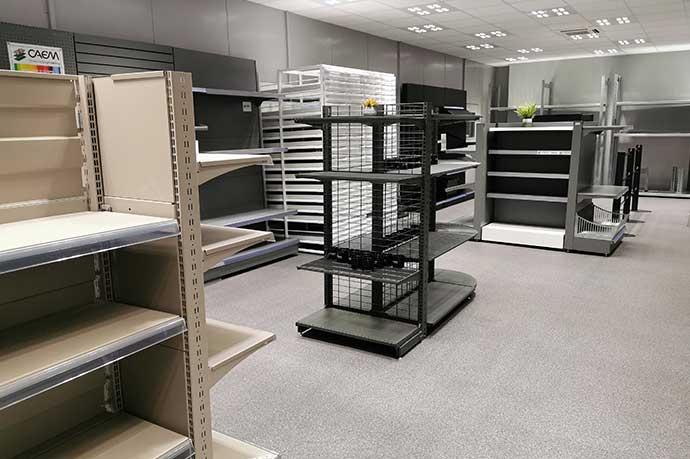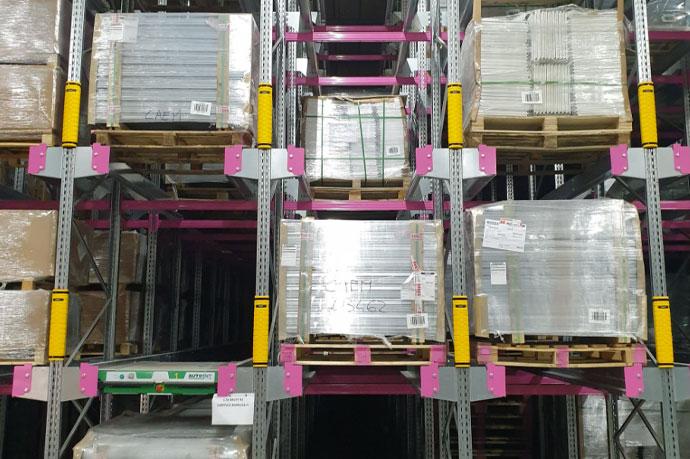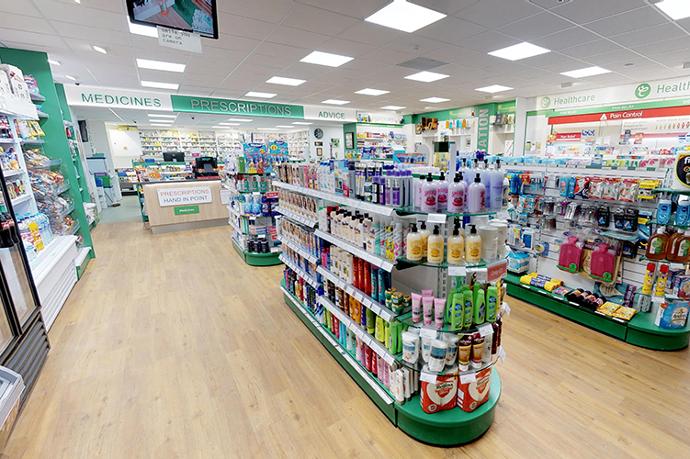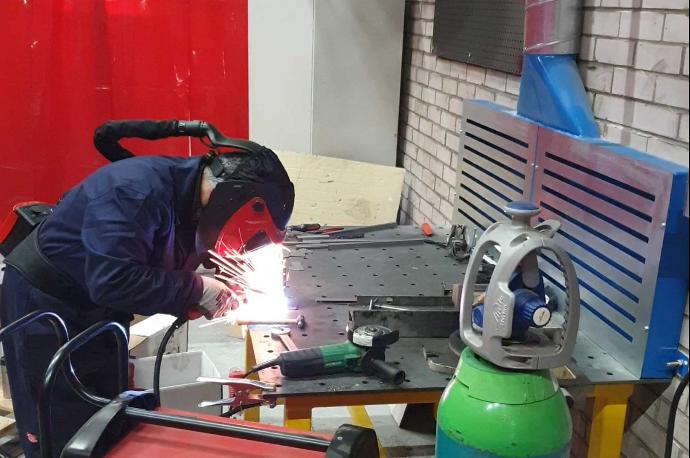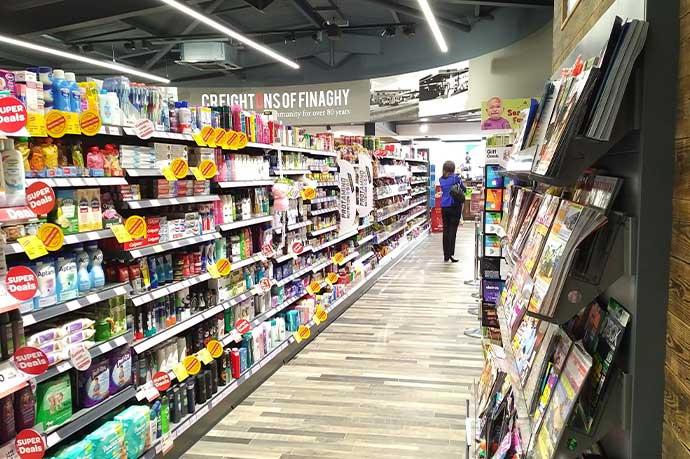Why Supermarket Shelves Matter for Retail Success
Think about the last time you walked into a supermarket. Those shelves you see aren't just holding products - they're silent salespeople shaping your entire shopping experience. When products are easy to find and attractively displayed, you're more likely to make a purchase. But when items are scattered or hard to reach, you might walk away empty-handed. That's why smart shelf design is crucial for any store's success.
The Evolution of Supermarket Shelves
Introduction to Modern Supermarket Shelving
Today's supermarket shelves are incredibly versatile, letting stores quickly adapt to new products and changing consumer needs. Smart technology has revolutionized these seemingly simple structures - imagine shelves that can track inventory and engage with customers automatically. Plus, stores now focus on making shelves look good, not just work well. The right colors and finishes can make shopping more enjoyable, encouraging customers to explore and buy more.
A Brief History of Retail Shelving
What started as basic wooden platforms has evolved into sophisticated display systems. Early shelves were purely functional, but as shopping habits changed, so did shelving design. The switch to metal and modular systems wasn't just about durability - it was about creating better ways to showcase products and tell brand stories. Modern shelves have become powerful marketing tools, helping stores connect with customers through thoughtful product presentation.
Key Benefits and Features of Supermarket Shelving
Maximising Space Efficiency
Good shelving makes the most of every inch in a store, both up and down and side to side. Modern systems are like retail Tetris - they can adapt to fit different product sizes while keeping everything organized and accessible. This smart use of space means stores can stock more variety without needing a bigger building.
Enhancing Product Visibility
Well-designed shelves make products pop. By placing items at eye level and using open designs, stores make it easy for shoppers to spot what they want - and discover things they didn't know they needed. Adjustable shelves let retailers highlight specific products, turning casual browsers into buyers.
Durability and Longevity
Quality shelving is built to last. These aren't your basic garage shelves - they're engineered to handle heavy loads day after day. By investing in tough, well-made shelves, stores save money in the long run and keep their spaces looking professional.
Customisation Options
Stores can make their shelves truly their own with different colors, materials, and layouts. This flexibility helps create a unique shopping environment that reflects the store's personality and makes shopping more engaging. Smart customization strengthens brand identity and makes marketing more effective.
Types of Supermarket Shelves
Wire Shelving
Wire shelves are perfect for keeping things fresh. Their open design lets air flow freely, making them ideal for produce and refrigerated items. They're easy to clean and maintain, which is crucial for food safety and presentation.
Wooden Shelving
Wood brings warmth and elegance to store displays, especially in specialty sections. While these shelves need more TLC to stay looking good, they create an upscale feel that can make products seem more premium.
Metal Shelving
Metal shelves are the workhorses of grocery stores. They're tough, reliable, and can handle heavy loads without breaking a sweat. Their clean, modern look fits most store designs, and they're built to handle the daily wear and tear of busy shopping environments.
Modular Shelving Systems
Think of modular shelves as retail building blocks. They can be rearranged easily to handle seasonal changes or special promotions. With lots of add-on options, these systems help stores stay flexible and keep displays fresh and interesting.
Specialty Shelving for Specific Products
Some products need special treatment. Whether it's a wine rack or a produce bin, specialty shelves are designed to show off specific items in the best possible way. This targeted approach helps products stand out and makes shopping easier for customers.
Designing an Effective Supermarket Layout
Understanding Shopper Behaviour
Knowing how people shop helps stores create better layouts. By studying traffic patterns and watching where people spend their time, retailers can place products where they'll get the most attention. Recent trends show that stores are giving more shelf space to niche items and store brands, responding to changing shopping habits.
Visual Merchandising Techniques
Good lighting, eye-catching colors, and clear signs can turn ordinary shelves into compelling displays. This is especially important now that only 2% of items in stores are new products. Smart visual merchandising helps familiar products feel fresh and interesting.
Creating a Flow to Guide Customers
A well-planned store layout is like a road map for shoppers. It should feel natural and help people discover products along their journey. With fresh food offerings down 15% to 20%, creating an intuitive flow is more important than ever to help shoppers find what they need while discovering new options.
Sustainability in Supermarket Shelving
Eco-Friendly Materials
More stores are choosing green materials for their shelves, like recycled metals and certified wood. This shift isn't just good for the planet - it appeals to shoppers who care about environmental impact. Manufacturers are stepping up too, finding ways to make shelves that are both eco-friendly and effective.
Recycling Old Shelving Units
Instead of sending old shelves to landfills, many stores are finding ways to recycle or repurpose them. This approach reduces waste and can save money on disposal costs. It's a win-win for stores looking to update their fixtures while staying environmentally responsible.
Innovations in Sustainable Design
New shelf designs are pushing sustainability forward with features like solar-powered lighting and materials that have less environmental impact. These innovations help stores meet growing demand for greener shopping experiences without sacrificing functionality or style.
The Impact of Technology on Shelving Solutions
Smart Shelves and IoT Integration
Modern shelves can do more than just hold products - they can track inventory in real time and help prevent stockouts. AI-powered monitoring systems make this even more effective, giving stores precise data about what's selling and what needs restocking.
Digital Display Solutions
Digital screens on shelves bring product information to life. They make it easy to update prices and promotions instantly, and they can help shoppers learn more about products right at the shelf.
Using Data Analytics for Shelf Optimization
Smart data tools help stores make better decisions about product placement and inventory. By analyzing shopping patterns and product performance, retailers can create more effective displays. Real-time analytics can reduce operating costs and boost returns, making stores more profitable.
Best Practices for Maintaining Supermarket Shelves
Regular Maintenance and Cleaning
Keeping shelves clean and well-maintained isn't just about looks - it's about creating a shopping environment people trust. Regular upkeep helps shelves last longer and keeps products looking their best.
Safety Standards and Regulations
Safety comes first in shelf management. Regular checks help prevent accidents and protect both shoppers and staff. Following safety rules isn't just about avoiding problems - it's about building customer confidence.
Training Staff in Efficient Shelf Management
Well-trained staff are key to great shelf management. When employees know the best ways to stock and organize shelves, shopping becomes easier for customers. Good training helps create consistent, attractive displays that drive sales.
Future Trends in Supermarket Shelving
Adapting to Evolving Consumer Preferences
As shopping habits change, shelves need to keep up. Today's shoppers want convenience and sustainability, so stores are creating flexible solutions that can quickly adapt to new trends and products.
Incorporating Augmented Reality
AR technology is making shopping more interactive. Imagine pointing your phone at a shelf to see recipe ideas or product reviews. These tools make shopping more engaging and help customers make better choices.
The Role of Artificial Intelligence in Retail Shelving
AI is becoming a powerful tool for shelf management. It helps predict what products will sell, where they should go, and when to restock. This technology makes stores more efficient and helps ensure customers find what they need.
